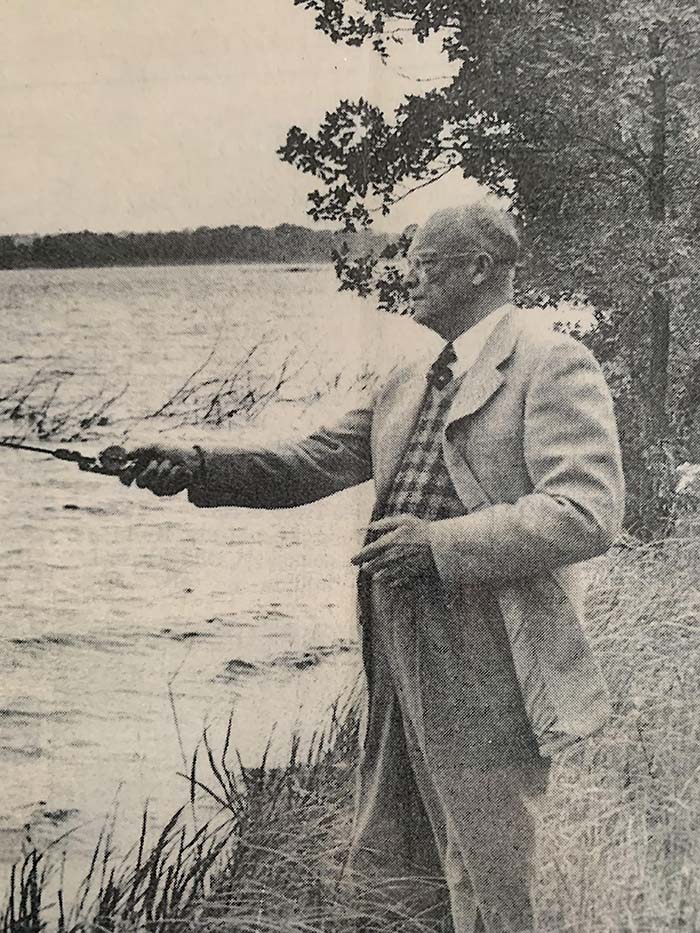Ike remembered as general, president
News | Published on May 9, 2023 at 4:15pm GMT+0000 | Author: Tucker Henderson
0
Dwight Eisenhower fished at Glendalough near Battle Lake in 1952, several years before the property became a state park.
By Tom Hintgen
Otter Tail County Correspondent
Most residents of Otter Tail County born after 1950 probably do not remember Dwight “Ike” Eisenhower, the former general and commander of military forces during World War II who served as president of the United States.
Those born in 1950 were only 10 or 11 years old when Eisenhower, also known as Ike, left office in January 1961. He was succeeded by President John F. Kennedy.
Many people in our area of west central Minnesota have heard the story of Eisenhower staying at Glendalough near Battle Lake during a presidential campaign retreat in the fall of 1952, several years before Glendalough became a state park.
It was a local historic day, on Sept. 8 of that year, when Eisenhower, a Republican, toured the Glendalough game farm and took time for fishing. He stayed overnight in the main lodge. The property was owned by the Twin Cities-based Cowles Media Company.
Renowned author Stephen Ambrose answers almost every question a person would ask about Ike in his book, “Eisenhower, Soldier and President.”
Said Ambrose, “Eisenhower hated war, but he hated Hitler more, and that stronger hatred drove him through Europe during World War II. As president he did not worry about his legacy. Eisenhower already had one.”
The author said that Eisenhower was more prepared than many of his predecessors to become president, having been a world figure close to a decade before taking office as leader of the free world.
As president he preferred humble retreats such as Glendalough near Battle Lake, and renamed the rustic retreat near the nation’s capital as Camp David in honor of his grandson.
Eisenhower made some tough decisions during his presidency, including upholding the rule of law in 1957.
That year the governor of Arkansas defied a 1954 U.S. Supreme Court ruling calling for all public schools to be desegregated. Violence was on the horizon.
In response, Eisenhower placed the Arkansas National Guard under federal control and sent Army paratroopers to Little Rock. This ensured that nine African American students could enroll at Central High School, previously an all-white school.
A year earlier, in 1956, Eisenhower signed legislation funding construction of the Interstate Highway System. A portion of the highway system runs through southwestern Otter Tail County.
Eisenhower, after he left office in 1961, retired with his wife, Mamie, to a small farm adjacent to the Civil War battlefield outside Gettysburg in Pennsylvania. Ike died in March 1969 and is buried in his home state of Kansas at the Eisenhower Presidential Library and Museum in Abilene.

